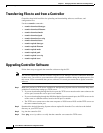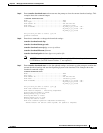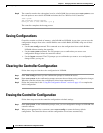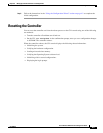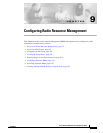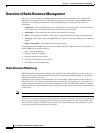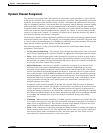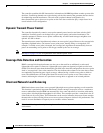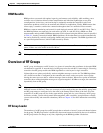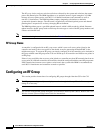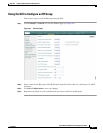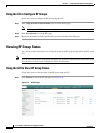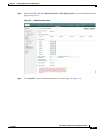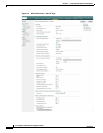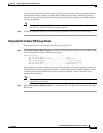
9-4
Cisco Wireless LAN Controller Configuration Guide
OL-8335-02
Chapter 9 Configuring Radio Resource Management
Overview of Radio Resource Management
The controller combines this RF characteristic information with RRM algorithms to make system-wide
decisions. Conflicting demands are resolved using soft-decision metrics that guarantee the best choice
for minimizing network interference. The end result is optimal channel configuration in a
three-dimensional space, where access points on the floor above and below play a major factor in an
overall wireless LAN configuration.
Dynamic Transmit Power Control
The controller dynamically controls access point transmit power based on real-time wireless LAN
conditions. Normally, power can be kept low to gain extra capacity and reduce interference. The
controller attempts to balance access points such that they see their fourth strongest neighbor at an
optimal –65 dbm or better.
The transmit power control algorithm only reduces an access point’s power. However, the coverage hole
algorithm, explained below, can increase access point power, thereby filling a coverage hole. For
example, if a failed access point is detected, the coverage hole algorithm can automatically increase
power on surrounding access points to fill the gap created by the loss in coverage.
Note See Step 5 on page 9-25 for an explanation of the transmit power levels.
Coverage Hole Detection and Correction
RRM’s coverage hole detection feature can alert you to the need for an additional (or relocated)
lightweight access point. If clients on a lightweight access point are detected at signal-to-noise ratio
(SNR) levels that are lower than the thresholds specified in the Auto RF configuration, the access point
sends a “coverage hole” alert to the controller. The alert indicates the existence of an area where clients
are continually experiencing poor signal coverage, without having a viable access point to which to
roam. The administrator can look up the historical record of access points to see if these alerts are
chronic, indicating the existence of a persistent coverage hole as opposed to an isolated problem.
Client and Network Load Balancing
RRM load-balances new clients across grouped lightweight access points reporting to each controller.
This function is particularly important when many clients converge in one spot (such as a conference
room or auditorium) because RRM can automatically force some subscribers to associate with nearby
access points, allowing higher throughput for all clients. The controller provides a centralized view of
client loads on all access points. This information can be used to influence where new clients attach to
the network or to direct existing clients to new access points to improve wireless LAN performance. The
result is an even distribution of capacity across an entire wireless network.
Note Client load balancing works only for a single controller. It is not operate in a multi-controller
environment.



